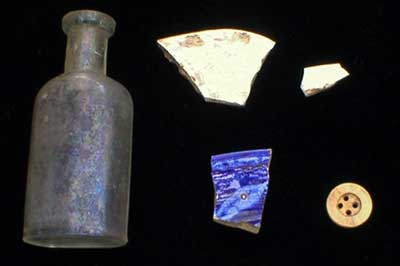Archaeologists documented foundations, pit cellars, postholes, trash pits, and walkways at Center Street. These remains and many of the artifacts recovered - window glass, nails, and bricks - were associated with the property's various buildings. Some bricks were handmade and featured a depression in one side. This is known as a “frog,” which helped the mortar more effectively bond bricks together. These bricks were part of an 1830s slave house foundation that had been mostly removed when the house was demolished. Just a few bricks and a stain were all that remained of the former structure. Investigators also documented a small pit cellar associated with another slave house. Cellars were sub-floor pits used for storage. These are common features of small, nineteenth-century houses and kitchens. Other artifacts included ceramic dish and glass bottle fragments, buttons, and animal bones.

Investigators could link the privies and trash pits, as well as most of the artifacts, to the site's poor, working-class residents, who lived at the site after the 1880s. Recovery of an embalming fluid bottle and a casket-shaped paper weight confirmed the historic documents that indicated an undertaker had operated a funeral home at the site during the early 1900s.
